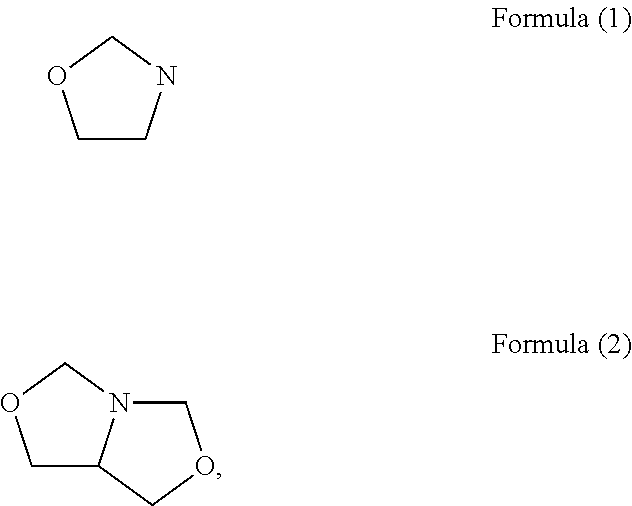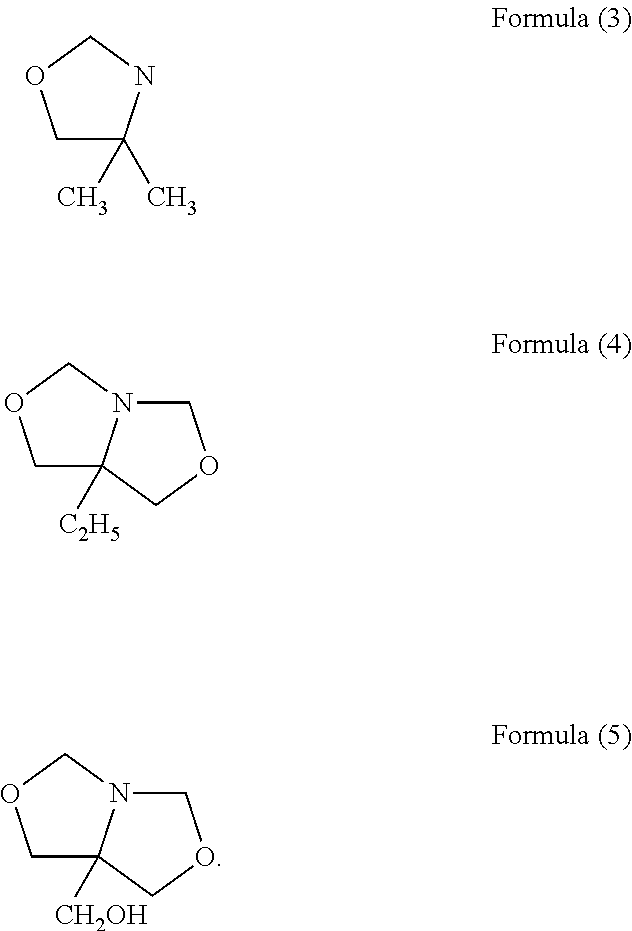Method for treating an animal substrate
a technology for treating animals and substrates, applied in dyeing processes, chemical treatment apparatus for leather/skins/hides/pelts, leather manufacturing, etc., can solve the problems of tanning processes that tend not to provide conditions, and the wet-white leathers that are derived from wet-white processes do not perform as well as the wet-blue leathers
- Summary
- Abstract
- Description
- Claims
- Application Information
AI Technical Summary
Benefits of technology
Problems solved by technology
Method used
Image
Examples
example 1
[0162]Solid particulate material in the form of Teknor Apex™ grade TA101M (Polyester—PET) beads supplied by Teknor Apex UK was used in this Example. The PET beads had a particle size of about 4 mm and a density of about 1.4 g / cm3 the shape of the particles was largely ellipsoidal. Example 1 was performed exactly as was Comparative Example 1 except that beads were present with a wet animal substrate:PET beads:water ratio of 10:14:1.0 on a weight basis. The beads were present in steps A), i) and ii).
[0163]This prepared Leather (1) by a method according to the first aspect of the present invention.
Leather Analysis
[0164]The shrinkage onset temperatures of leather prepared in the above examples were measured using a differential scanning calorimeter (DSC) (model: Mettler Toledo 822e DSC). A moist leather sample was scanned at 5° C. / minute over the temperature range 20-140° C. with reference to an empty weighed, pierced aluminium pan. The calorimeter was otherwise operated generally in ac...
PUM
| Property | Measurement | Unit |
|---|---|---|
| particle size | aaaaa | aaaaa |
| particle size | aaaaa | aaaaa |
| particle size | aaaaa | aaaaa |
Abstract
Description
Claims
Application Information
 Login to View More
Login to View More - R&D
- Intellectual Property
- Life Sciences
- Materials
- Tech Scout
- Unparalleled Data Quality
- Higher Quality Content
- 60% Fewer Hallucinations
Browse by: Latest US Patents, China's latest patents, Technical Efficacy Thesaurus, Application Domain, Technology Topic, Popular Technical Reports.
© 2025 PatSnap. All rights reserved.Legal|Privacy policy|Modern Slavery Act Transparency Statement|Sitemap|About US| Contact US: help@patsnap.com



